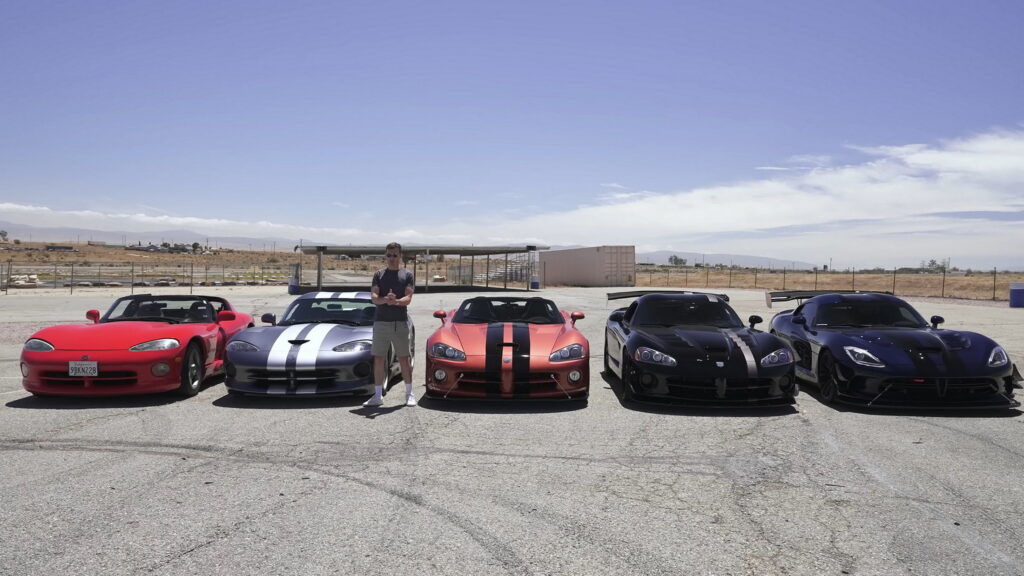There’s a popular trope about the Porsche 911, that states that every generation looks more or less like the last. But the Dodge Viper proves that the German company isn’t the only one that can produce a remarkably consistent sports car over a span of decades.
Like the Porsche 911, every generation of Dodge Viper looks a lot like the last. That isn’t really a complaint about either car, nor is it to say that every example is identical. However, the design cues that mark them out as special have remained consistent through the years, giving them both a strong brand identity.
The similarities between generations are more than skin deep, though. In a new video from Carwow comparing each generation of Viper, host Mat Watson discovers that the American sports car’s development through the years really was evolutionary, rather than revolutionary.
Read: One-Off Dodge Viper From ASC Has A McLaren-Tuned V10
Of course, there are the major connections, such as the fact that each model has a 10-cylinder engine and a six-speed manual transmission. However, just because the basic recipe was the same, didn’t mean that Dodge couldn’t find room for improvement over the 20 years that the Viper was in production. What started as an 8.0-liter V10 that made 400 hp (298 kW/406 PS) for the first-gen model evolved into an 8.4-liter V10 that made 650 hp (485 kW/659 PS) for the final, fifth-generation car.
Each example also powered the rear wheels exclusively, following in the Carroll Shelby-designed tradition of the first-generation model. Although most examples adhered to that tradition so strictly that they offered limited or no driver aids, the fifth-generation model did finally add driver-coddling technologies like launch control and anti-lock braking.
While that means that the last model was a bit of an outlier, it did also mean faster acceleration. Whereas the first four generations are all within half a second of each other in the 0-60 mph (0-96 km/h) sprint, the last example is the fastest of all, reaching highway speeds in 4.2 seconds with Watson at the wheel.
The fifth-generation model is an outlier in another way, too. With the Mat Watson-facing cameras set up in the same locations for all of the vehicles, fifth-gen aside it’s kind of hard to tell which is which from a view of the inside alone. The first four examples all have a spartan, black cabin, with a sporty seat and a pair of big speakers next to the driver. Obviously the varying levels of roof are a hint, and I’m sure that there are other differences from the driver’s point of view, but it’s a fascinating example of just consistent the Viper was over the course of its existence.









